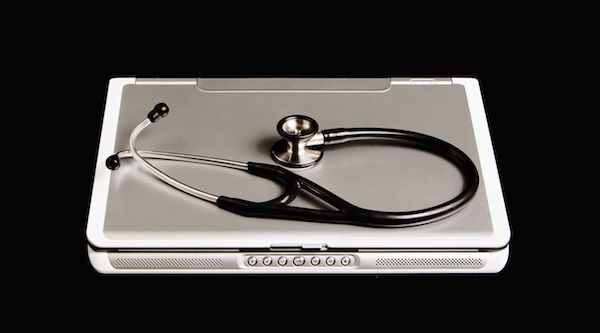
FRIDAY, Feb. 7, 2014 (HealthDay News) — A so-called implantable insulin delivery device could one day free people with type 1 diabetes from the need for multiple daily injections, scientists say.
“Diabetes is a difficult-to-treat condition, and yet keeping in very good balance all the time is the only way to maintain good health,” said the lead researcher on the project, Joan Taylor, a professor of pharmacy at De Montfort University in Leicester, England.
Taylor and her colleagues hope to have the device ready for human trials in as soon as two years.
The device, which is currently dubbed “a self-regulating insulin delivery device,” would be implanted in the abdomen. The outside of the device would be made of plastic or metal. There would be no electronic or moving parts, according to Taylor. The device wouldn’t need batteries, and because it’s not made of biological material, there’s no worry of rejection, she said.
The device would house a refillable insulin reservoir that would contain insulin with a protective gel layer. The insulin and gel would need to be replaced approximately every two weeks.
That gel layer would react to the presence of sugar (glucose) in the blood.
“The gel material contains a lock-and-key chemical interaction that holds the gel together and this is interrupted by the presence of glucose that enters the device gel layer from the fluid surrounding it in the body. When the gel softens, the insulin in it travels much more quickly and reaches the body circulation. Once the insulin has lowered the blood glucose, glucose starts to leave the gel again and the gel hardens, effectively closing the gateway,” Taylor explained.
This type of insulin delivery more closely mimics the natural delivery of insulin than does an insulin injection, Taylor said. Insulin is a hormone that’s necessary for the body to metabolize the carbohydrates in food. Carbohydrates transform into glucose during digestion to provide fuel for the body’s cells. But, without insulin, the glucose can’t enter the cells and builds up in the bloodstream.
High blood sugar (glucose) levels can eventually lead to serious complications, such as kidney or heart disease and vision problems. But, low blood sugar levels can also be dangerous, even potentially deadly.
“If [the gel] did not re-harden, the dose released would be higher than it should be,” said Taylor, who added that the research team is working to ensure that insulin won’t gush out. Or perhaps the researchers could design the device with a way to disable the delivery of insulin if necessary, she said.
“It goes without saying that the medical engineering needs to be perfect. It must not leak or be vulnerable to easy damage. We absolutely recognize that insulin is an extremely potent drug that needs respect,” Taylor said.
Sanjoy Dutta, senior director of treatment therapies at JDRF (formerly known as the Juvenile Diabetes Research Foundation), said he’s intrigued by Taylor’s research, but added that there are “challenges for these researchers and other groups who are trying to develop implanted devices and glucose responsive insulin.”
The ideal glucose responsive insulin needs to “deliver the right amount of insulin, which means you would not need to carb-count; you would not need to worry about [the effect on your blood sugar from] exercising one day and not the next; you would not have to worry about how stress [might change your blood sugar],” Dutta said. “Ideally, it should almost work like a pancreas, but this will take a long time to develop.”
However, Dutta noted that just 10 years ago people thought an artificial pancreas was a distant dream, yet an early version of such a system was approved by the U.S. Food and Drug Administration last summer. The artificial pancreas is worn outside the body and consists of a continuous glucose monitoring system, an insulin pump, and software with a sophisticated algorithm to predict blood sugar levels.
There are several different types of artificial pancreas systems currently in clinical trials. The goal is to have a closed-loop system that would allow someone with diabetes to let the device take over the management of their blood sugar levels. The system already approved by the FDA is called a low-glucose suspend system, and it shuts down insulin delivery when it senses that blood sugar levels have dropped too low. This system still requires the person with diabetes to direct most of their daily care, however.
Dutta said that “a true glucose responsive insulin will trump a closed-loop artificial pancreas system any day, but the question is how long will it take us to get to a true glucose responsive insulin?”
Dutta and Taylor expect that both the implanted device under development in Britain — which is not an artificial pancreas — and the insulin encased in a glucose responsive gel will face a number of regulatory hurdles worldwide.
“The FDA will look at this with a fine-tooth comb. They will require many studies and safety data,” said Dutta. But, he added, approval is not impossible. Other products that combine medications with medical devices, such as drug-eluting cardiac stents, have already been approved, he noted.
More information
Learn more about type 1 diabetes from the U.S. National Library of Medicine.
Copyright © 2025 HealthDay. All rights reserved.

